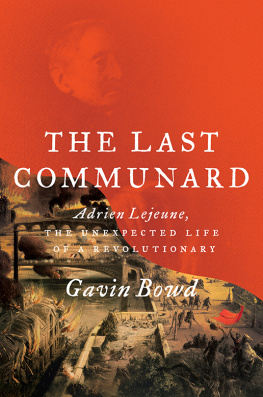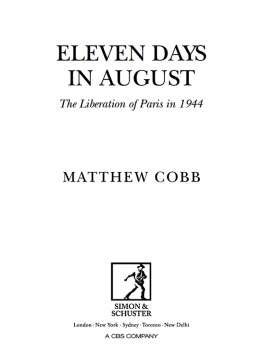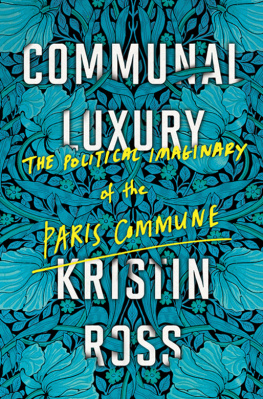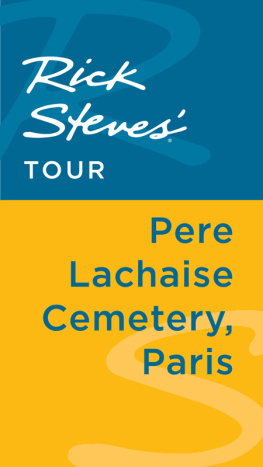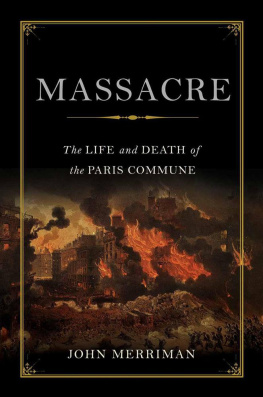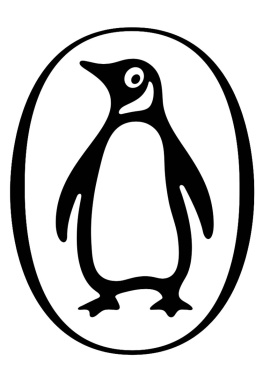THE LAST
COMMUNARD
Adrien Lejeune, the Unexpected
Life of a Revolutionary
GAVIN BOWD

First published by Verso 2016
Gavin Bowd 2016
Every effort has been made to trace copyright holders and to obtain their permission for the use of any material that might be under copyright. The publisher apologizes for any errors or omissions and would be grateful if notified of any corrections to be incorporated in future reprints or editions of this book.
All rights reserved
The moral rights of the author have been asserted
1 3 5 7 9 10 8 6 4 2
Verso
UK: 6 Meard Street, London W1F 0EG
US: 20 Jay Street, Suite 1010, Brooklyn, NY 11201
versobooks.com
Verso is the imprint of New Left Books
ISBN-13: 978-1-78478-285-6
ISBN-13: 978-1-78478-288-7 (US EBK)
ISBN-13: 978-1-78478-287-0 (UK EBK)
British Library Cataloguing in Publication Data
A catalogue record for this book is available from the British Library
Library of Congress Cataloging-in-Publication Data
Names: Bowd, Gavin, 1966 author.
Title: The last communard / Gavin Bowd.
Other titles: Dernier communard. English
Description: [First edition] | Brooklyn, NY : Verso,
[2016] | Includes
bibliographical references and index.
Identifiers: LCCN 2016007024 | ISBN
9781784782856 (hardback : alk. paper)
Subjects: LCSH: Lejeune, Adrien, 18471942. |
Revolutionaries France Biography. | Communists
France Biography. |
French Soviet Union Biography. | Paris (France)
History Commune, 1871.
Classification: LCC DC342.8.L384 B6913 2016 | DDC
335.43092 dc23
LC record available at http://lccn.loc.gov/2016007024
Typeset in in Fournier by MJ & N Gavan, Truro, Cornwall
Printed in the US by Maple Press
Whoever creates for the people false revolutionary legends, who amuses them with enchanting stories, is as criminal as the geographer who makes untruthful maps for navigators.
Prosper-Olivier Lissagaray
Property is theft.
Pierre-Joseph Proudhon
Contents
On 10 November 1989, the day after the fall of the Berlin Wall, I discovered the last Communard. Having been a young communist for a decade, I tried to clear my head of the cataclysmic news of the previous day and repaired to one of my favourite places for solitary contemplation in Paris, the cemetery of Pre-Lachaise. Here I wandered among dead leaves and neglected tombs, until I arrived at the corner in the south-east of the cemetery called Le Mur des Fdrs.
Here the very atmosphere of the place distinguishes it from the rest of the necropolis. It is a realm of memory, layered with several periods of history. It was in front of this wall, legend has it, that the Paris Commune ended, when on 28 May 1871, 147 of its citizens militia, known as Fdrs (after the Federation of the National Guard), were shot before being hastily buried in a shallow grave. This massacre was represented soon after in Ernest Pichios apocalyptic painting Le triomphe de lordre, which depicts young and old, women and children, being mown down and tumbling into an abyss. Indeed, the place became a shrine to what was seen as a tragic experiment in peoples democracy. Facing the wall, which now boasts a commemorative plaque, are several relatively discreet monuments to the survivors of that bloody episode: the tombs of Jean-Baptiste Clment, author of the song Le Temps des cerises in which cherries are compared to drops of blood lies here, as well as Paul Lafargue, husband of Laura Marx, with whom he committed suicide in 1911 to escape the impairment of old age.
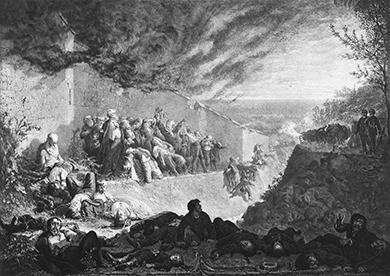
Ernest Pichio, Le triomphe de lordre (1875)
In this section of the cemetery, I wandered along the great circular avenue that held many Communist graves, where, until very recently, the French Communist Party (PCF), buried almost all its dignitaries: the Son of the People Maurice Thorez; the clandestine party leader of the Second World War, Jacques Duclos; the founding leader Marcel Cachin; the LHumanit editor Paul Vaillant-Couturier; and the writers Henri Barbusse and Paul Eluard. Beside the grave of Duclos, I noticed for the first time a small black tombstone. It bore a simple epitaph:
Adrien Lejeune, the last Communard, died in Novosibirsk; USSR; 1942
I stood for a few minutes in front of this modest grave and wondered about the things he might have seen in such a long life. What was he doing in the USSR in the darkest days of the Second World War? How did he find his way back to this corner of Paris, to rest in front of the wall where the last Communards fell?
In the weeks and months afterwards these questions continued to nag at me, and, despite the historic upheavals that were occurring around the world, curiosity kept bringing me back to the name engraved on that little black stone. And I started to see what I could find out about this enigma.
LHumanit, the official paper of the PCF, was my first port of call. On 22 May 1971 the centenary year of the Paris Commune the front page of the broadsheet had displayed a photograph of Lejeune over an article entitled One hundred years on. The Communard Lejeune will rest near his last barricade:
Yesterday at Le Bourget, the regular Aeroflot MoscowParis flight brought back the ashes of Alfred [sic] Lejeune, the last of the Communards, who died aged ninety-five in 1942 in Novosibirsk (Soviet Union). The urn was carried by the president of the Party Committee of Novosibirsk, Filatov, accompanied by the academician Inozentsev of the Central Committee of the Communist Party of the Soviet Union and by comrade Pankov, collaborator at the Central Committee. They were greeted by Gaston Plissonnier and Paul Laurent of the Political Bureau of the French Communist Party, Lucien Mathey of the Central Committee, secretary of the Federation of Seine-Saint-Denis, Jean Braire, general secretary of the Friends of the Commune, Maurice Niles, deputy-mayor of Drancy, the secretary of the communist cell of the Airport of Le Bourget, etc. Accompanying the representatives of the embassy of the USSR was a delegation from Bagnolet, led by our comrade Joineau, deputy-mayor. It is in the mairie of Bagnolet, his home town, that the ashes of Alfred Lejeune have been displayed. A ceremony will take place there tomorrow morning at ten with the participation of the Soviet delegation and Jacques Duclos. Already yesterday afternoon the local population began to pay their respects to the urn. The urn will be transported on Sunday to the Mur des Fdrs where a last homage will be paid to Alfred Lejeune by all the participants in the Centenary Demonstration.
On page five, Fernand Chatel recounted the story of this great survivor, this time managing to spell his name correctly. Adrien Lejeune, we learn, was born on 3 June 1847, in Bagnolet. His father was a barrel-maker, his mother a seamstress. He was forced to earn his living from a young age at a variety of jobs. After many nights and Sundays spent studying, he became a herbalist in a pharmacy. Two years later, aged twenty-two, Adrien Lejeune joined the Republican Association of Freethinkers that brought together socialists and progressives in opposition to the imperial regime and its staunch ally, the Catholic Church. Though protest marches were forbidden, the funeral of each freethinker turned into a popular demonstration against the Empire and oppression. In February 1870, at the close of one such funeral procession in Bagnolet, Adrien Lejeune addressed the crowd. On 4 September 1870, after Emperor Napoleon IIIs declaration of war against Prussia had led to disaster at Sedan and his own capture, an uprising in Paris culminated in the proclamation of the Third Republic.

